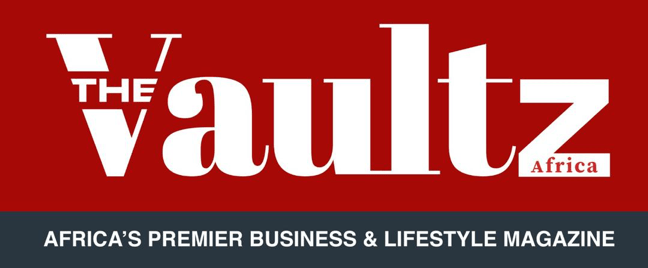
As 2025 begins, private equity stakeholders are cautiously optimistic about a long-awaited recovery in deal activity. After two years of declining buyout transactions and a sluggish fundraising environment, private equity managers hope that the New Year will usher in stability and growth. While 2024 held similar promises, the anticipated rebound never materialized.
However, shifting market conditions and emerging trends suggest that 2025 could be the inflection point for the private equity landscape. To buttress this point, there are key factors driving this optimism and the trends likely to shape private equity markets in the this year.
A Foundation for Deal Flow
One of the critical factors hindering private equity activity in recent years has been the uncertainty surrounding asset valuations. High inflation, rising interest rates, and market volatility widened the gap between vendor and buyer pricing expectations, stalling deal flow. However, early signals suggest that asset valuations are beginning to stabilize.
The first interest rate cuts in 2024 have started to influence valuations positively. Notably, the growth and venture capital segments, which bore the brunt of tightening liquidity and risk aversion, are showing signs of recovery. For example, Sequoia, a leading venture capital firm, recently marked up its 2020 vintage fund by nearly 25%. Similarly, start-ups like Oura and Moneybox achieved significantly higher valuations in their latest funding rounds, indicating renewed investor confidence.
In the mid-market buyout space, the Argos Index reported an average multiple of 9.5x EBITDA in Q3 2024, a marked improvement after three years of decline. These developments suggest that private equity firms may finally see more favorable pricing, paving the way for increased deal activity in 2025.
Exit Channels As Momentum Builds for Asset Sales
A stable valuation backdrop is also improving the outlook for private equity exits. After a prolonged drought, exit deal value and volume showed encouraging trends in late 2024. According to White & Case Debt Explorer, global exit deal value reached $94.06 billion in Q3 2024, the highest in a year, while exit volumes posted their most active quarter since Q3 2022.
General Partners (GPs) are cautiously optimistic about this momentum. A survey by EY in Q3 2024 revealed that 53% of GPs expect exits to increase in 2025, compared to 34% at the beginning of the year. This renewed confidence stems from the reopening of traditional exit pipelines and the sustained success of alternative liquidity solutions.
Continuation funds, for instance, have emerged as a credible exit route. By transferring assets into new vehicles, GPs provide investors with options to either roll over their interests or cash out. Jefferies reported that continuation funds accounted for 14% of sponsor-backed exit volume in H1 2024, a record high. Additionally, NAV financing has gained traction, offering liquidity to portfolio companies and facilitating distributions to Limited Partners (LPs). These mechanisms will likely remain integral to the exit landscape in 2025.

Alternative Liquidity, A Strategic Complement
Even as traditional exit channels reopen, alternative liquidity options are expected to play a vital role in private equity’s recovery. Continuation funds and NAV financing have demonstrated their utility in providing liquidity during challenging periods, and their adoption is likely to continue.
NAV financing, in particular, has seen remarkable growth. The market for NAV facilities has more than doubled since 2023, driven by increasing familiarity and comfort among GPs. These facilities enable sponsors to support portfolio companies beyond fund investment periods and, in some cases, make distributions. As private equity markets transition back to a steadier exit pace, these alternative liquidity solutions will remain a key part of the ecosystem.
Clearing the Backlog
Revitalizing the stagnant fundraising market is expected to be a top priority for private equity managers in 2025. Over the past few years, a significant portion of limited partner (LP) capital has been locked in assets held within private equity portfolios for extended periods. Data from PitchBook and EY reveals that approximately 40% of private equity-held companies have been in portfolios for over four years. This backlog has constrained liquidity for LPs, making it difficult for them to commit fresh capital to new funds. Addressing this challenge by facilitating timely exits and distributions will be crucial for reigniting interest in private equity investments.
Encouragingly, LP sentiment toward new investments is beginning to shift. After years of cautious behavior due to market uncertainties, discussions around spinouts and first-time funds are resurfacing. These developments signal a potential turnaround in fundraising dynamics. However, a sustained recovery in LP confidence hinges on private equity managers’ ability to consistently deliver exits and distribute returns. Without this, efforts to secure new allocations may falter, leaving firms unable to fully capitalize on the emerging interest among LPs.
Balancing portfolio optimization with a renewed focus on fundraising presents another challenge for general partners (GPs). Portfolio optimization involves enhancing the value of existing assets through strategic interventions such as operational improvements and targeted growth initiatives. Simultaneously, GPs must allocate resources to engage LPs, build trust, and communicate the long-term potential of their strategies. Achieving this equilibrium requires a proactive approach, where GPs demonstrate their capacity to generate returns in a competitive and evolving market landscape.
The path forward for private equity fundraising in 2025 involves more than simply clearing the backlog. It also entails positioning portfolios to meet the evolving expectations of LPs, who are increasingly prioritizing transparency, shorter return horizons, and alignment with ESG principles.
Sector-Specific Opportunities
The anticipated recovery in private equity markets in 2025 will likely not occur uniformly across all sectors. Instead, opportunities are likely to be concentrated in areas where strong fundamentals and innovation converge. Among these, technology, healthcare, and renewable energy are emerging as clear frontrunners. These industries not only demonstrate resilience but also align with evolving investor preferences, including a growing emphasis on sustainability and digital transformation.
The technology sector remains a cornerstone of private equity investment, driven by its scalability and ability to adapt to changing market dynamics. Companies specializing in software-as-a-service (SaaS) platforms and cybersecurity solutions have continued to attract robust investor interest, as businesses across industries rely on technology to drive efficiency and safeguard operations. Furthermore, advancements in artificial intelligence (AI) and machine learning are creating new opportunities for growth, making the tech sector a critical focus for private equity firms.
In healthcare, the ongoing demand for medical services and the rapid pace of biotechnology innovation present a wealth of opportunities. Private equity firms are zeroing in on healthcare providers, medical device manufacturers, and digital health platforms that address critical needs and enhance patient outcomes. The COVID-19 pandemic underscored the importance of healthcare infrastructure, and investors are now more attuned than ever to the sector’s potential for long-term value creation.
Renewable energy is another sector poised for significant private equity activity, as the global transition to sustainable energy sources gathers momentum. Investments in wind, solar, and energy storage projects are not only driven by strong growth prospects but also by an increasing demand for ESG-compliant assets. Private equity firms are leveraging these opportunities to align their portfolios with environmental sustainability goals while capitalizing on attractive returns from green energy initiatives. Ultimately, the recovery in private equity will be shaped by sector-specific dynamics.
Challenges and Risks in Private Equity for 2025
While there is optimism surrounding the recovery of private equity markets in 2025, a number of challenges and risks could temper the sector’s momentum. Macroeconomic uncertainties remain a key concern, as the potential for geopolitical disruptions and lingering inflationary pressures could create a volatile investment environment. The relationship between these forces and central bank policies will likely affect interest rates, asset valuations, and investor sentiment, posing hurdles for private equity managers aiming to execute deals or secure exits.
Heightened regulatory scrutiny is another pressing issue for private equity firms. As governments worldwide place greater emphasis on financial oversight, tax transparency, and corporate accountability, compliance costs are rising. Additionally, the evolving landscape of environmental, social, and governance (ESG) standards adds another layer of complexity. Private equity managers must now integrate ESG considerations into their investment strategies to meet stakeholder expectations and regulatory requirements, which can be both resource-intensive and time-consuming.
Operational excellence has become a critical factor for private equity firms striving to remain competitive. With valuations stabilizing and competition intensifying, managers can no longer rely solely on financial engineering to generate returns. Instead, they must focus on value creation within their portfolios. This involves improving operational efficiencies, identifying growth opportunities, and implementing digital transformation initiatives to enhance portfolio company performance. The ability to drive these changes effectively can make or break a firm’s success in an increasingly crowded market.
Another challenge lies in managing investor expectations and maintaining trust. Limited partners (LPs) are becoming more discerning, demanding greater transparency and shorter timeframes for returns. Firms that fail to meet these expectations risk losing investor confidence and future commitments. To address this, private equity managers must adopt clear communication strategies and demonstrate their ability to adapt to market shifts while delivering consistent value.
While 2024 fell short of expectations, 2025 offers renewed hope for the private equity industry. Stabilizing valuations, improving exit dynamics, and innovative liquidity solutions provide a solid foundation for recovery. However, achieving sustained growth will require navigating a complex landscape of opportunities and challenges.
Private equity managers, investors, and stakeholders must remain agile and proactive, leveraging emerging trends to drive performance. If these conditions align, 2025 could indeed be the breakout year that private equity has been anticipating.


